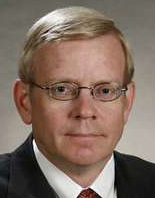Torrey: 2020's Top 8 Books for the Workers' Compensation Professional
Monday, December 14, 2020 | 0
Here are my humble recommendations with regard to the best books for the workers’ compensation professional for 2020.

David B. Torrey
"Soul Full of Coal Dust" (Little Brown 2020), by journalist Chris Hamby, is the book of the year for professionals in our field. Here the hero is John Cline, a West Virginia federal black lung specialist who, first as a benefits counselor and then as a late-in-life law school grad, fights for pneumoconiosis victims both in court and in Congress.
The story, in short: For many years lawyers defending the coal industry would, during discovery, withhold medical evidence that showed that the claimant miner had pneumoconiosis. Defense lawyers believed that such items were not discoverable and in many cases pro se (or poorly-represented) miners would not know to ask for such items anyway.
Cline and his colleagues discovered the tactic and were aggressive in changing custom, law and practice. The author tells a good story, knowing how to keep the reader engaged.
Drake University Professor Nate Holdren has penned a revisionist history of the creation of workers’ compensation laws a century ago in "Injury Impoverished: Workplace Accidents, Capitalism, and Law in the Progressive Era" (Cambridge Univ. Press 2020). According to another historian of the creation, John Fabian Witt, the author “fiercely critiques the workers’ compensation reforms enacted by progressive reformers a century ago as legitimating a form of systematic labor violence.”
Dr. Richard Victor, with "Scenarios for the 2030s: Threats and Opportunities for Workers’ Compensation Systems" (Sedgwick Institute 2019), has authored an intriguing book seeking to predict how the socioeconomic landscape surrounding our field will look in another decade. In this current period of anxiety and angst, Victor forecasts, by coincidence, an equally unhappy set of predictions for our system.
This is so as he hypothesizes a threefold increase in the costs to employers of workers’ compensation over the next couple of decades, while benefits to workers do not meaningfully increase. The author, as a solution, devotes much attention to the idea of “super carve-outs” that would cover not just collectively bargained arrangements but other areas of employment.
Amy Aronson, who teaches at Fordham University, has published a new (and the first) biography of the lawyer and social reformer Crystal Eastman. In "Crystal Eastman: A Revolutionary Life" (Oxford University Press 2019), Aronson shows that Eastman’s memorable role in the Pittsburgh Survey, at the conclusion of which she published "Work-Accidents and the Law" (1910), was just the start of an amazing professional career.
In "Hustle & Gig: Struggling and Surviving in the Gig Economy" (University of Chicago Press 2019), sociologist Alexandrea Ravenelle undertakes a critical examination of work in the gig economy. She does so through interviews with workers in four different types of gig work: drivers for Uber and Lyft; “taskers” for TaskRabbit; chefs working for the now-defunct Kitchensurfing; and Airbnb entrepreneurs.
The dominant theme is that the gig economy is, for the vast majority of workers, not some utopian form of work, where individuals empower themselves to become entrepreneurs, free of onerous control by bosses, and secure a position to dictate their own destiny.
"Hustle & Gig" is, as to workers’ compensation, a remarkable book. Among the many critiques of the gig economy, none that I know of devote as much space to the lack of work injury protection that attends gig economy jobs.
In Erin Hatton’s "Coerced: Work Under Threat of Punishment" (University of California Press 2020), the author, also a sociologist, examines the circumstances of four types of individuals at labor: graduate students, “workfare” workers, scholarship athletes and prisoners. These are all types of workers who are not merely subject to control under the penalty of being fired, but under the threat of being punished.
The author calls this phenomenon “status coercion.” Little discussion is found here of how injuries sustained by such individuals in the midst of their labor is handled. Still, the book is educational in prompting the reader to think outside the box and to consider, from humanitarian, ethical and economic points of view, a very different form of labor relationship.
The issues of work, disability and the circumstances of labor in a steel mill are all central to the candid memoir "Rust: A Memoir of Steel and Grit" (Flatiron Books 2020), by Eleise Colette Goldbach. She treats all of these issues, front and center, in an edifying, if ultimately bleak, account of her years as a steelworker at the vast ArcelorMittal mill in Cleveland.
Speaking of bleak memoirs, in "Mill Town: Reckoning With What Remains" (St. Martin’s Press 2020), journalist Kerri Arsenault tells the story of a small town in Maine that has long been dominated by a paper mill believed by many to be sickening its workers and local residents. The suspected agent is dioxin, a byproduct of paper bleaching, which many say can cause cancer.
The hero of the book is a town physician who crusaded for decades against the mill, seeking to publicize such things as an alarming number of childhood cancer cases.
David B. Torrey is adjunct professor of law at the University of Pittsburgh School of Law and a workers’ compensation judge with the Pennsylvania Department of Labor & Industry. This entry is republished from the Workers' Compensation Law Professors blog, with permission.



Comments